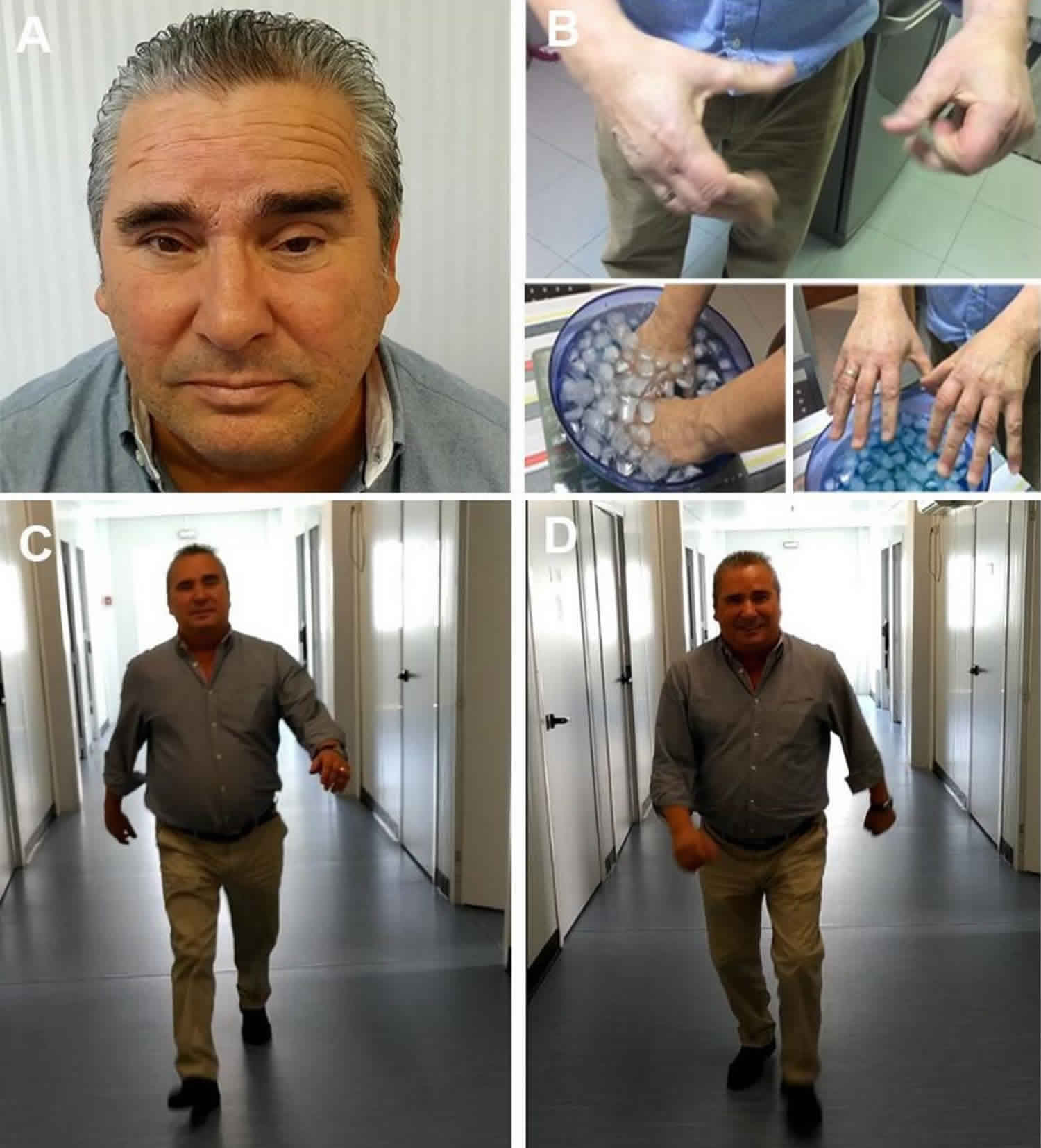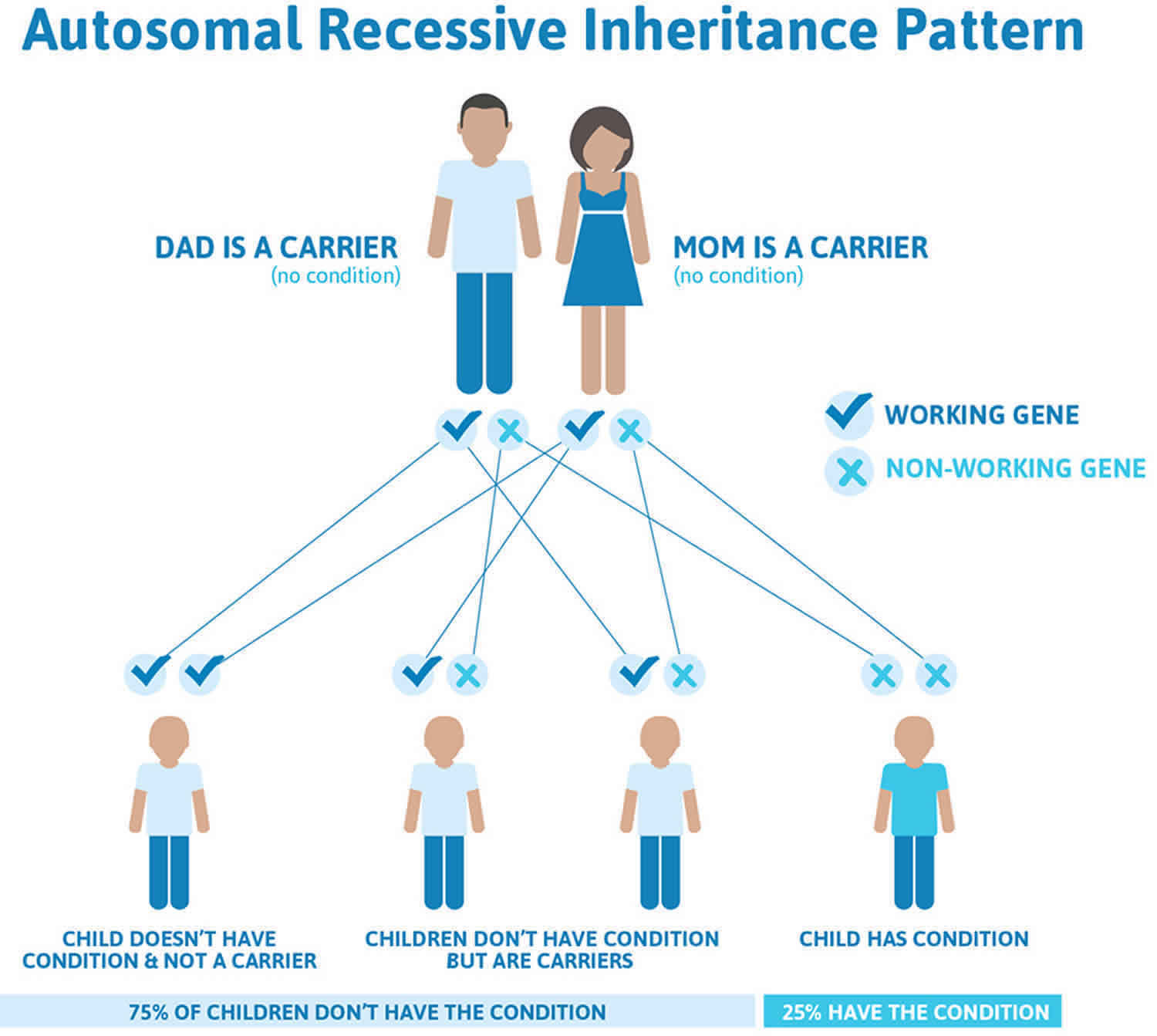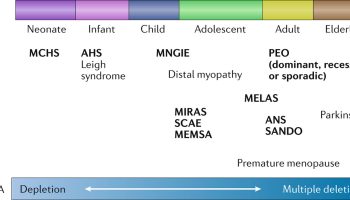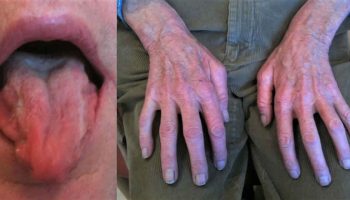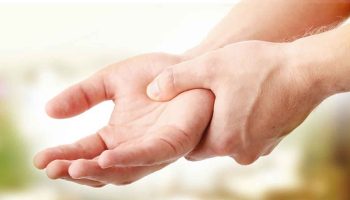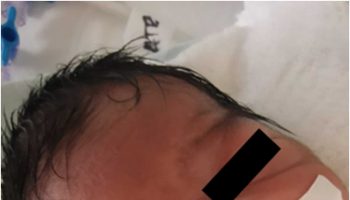Brody myopathy
Brody myopathy also called Brody disease, is a rare hereditary condition that affects the skeletal muscles, which are the muscles used for movement. Affected individuals experience muscle cramping and stiffening after exercise or other strenuous activity, especially in cold temperatures. These symptoms typically begin in childhood. They are usually painless, but in some cases can cause mild discomfort. The muscles usually relax after a few minutes of rest. Most commonly affected are the muscles of the arms, legs, and face (particularly the eyelids).
In some people with Brody myopathy, exercise leads to the breakdown of muscle tissue (rhabdomyolysis). The destruction of muscle tissue releases a protein called myoglobin, which is processed by the kidneys and released in the urine (myoglobinuria). Myoglobin causes the urine to be red or brown.
Brody myopathy is a rare condition, it is estimated to occur in 1 out of 10,000,000 people. Researchers suggest that this may be an underestimation as the diagnosis may go unrecognized 1.
Some cases of Brody myopathy are caused by mutations in the ATP2A1 gene. The cause of Brody myopathy for individuals not found to have an ATP2A1 gene mutation remains unknown. Brody myopathy is usually inherited in an autosomal recessive manner with a few reported cases of autosomal dominant inheritance 1. While there is no one treatment for Brody myopathy, certain muscle relaxants, such as dantrolene and blood pressure medications called calcium channel blockers, such as verapamil may be useful 2.
Some researchers suggest that individuals found to have an ATP2A1 gene mutation have a slightly different disorder in which symptoms appear at an earlier age. They use the disease term “Brody disease” for individuals with an identified mutation versus “Brody syndrome” for those that do not 3. More research may help clarify whether these are two different disorders or a variation of the same disorder.
Brody myopathy causes
Mutations in the ATP2A1 gene cause Brody myopathy. The ATP2A1 gene provides instructions for making an enzyme called sarco(endo)plasmic reticulum calcium-ATPase 1 (SERCA1). The SERCA1 enzyme is found in skeletal muscle cells, specifically in the membrane of a structure called the sarcoplasmic reticulum. This structure plays a major role in muscle contraction and relaxation by storing and releasing positively charged calcium atoms (calcium ions). When calcium ions are transported out of the sarcoplasmic reticulum, muscles contract; when calcium ions are transported into the sarcoplasmic reticulum, muscles relax. The SERCA1 enzyme transports calcium ions from the cell into the sarcoplasmic reticulum, triggering muscle relaxation.
ATP2A1 gene mutations lead to the production of a SERCA1 enzyme with decreased or no function. As a result, calcium ions are slow to enter the sarcoplasmic reticulum and muscle relaxation is delayed. After exercise or strenuous activity, during which the muscles rapidly contract and relax, people with Brody myopathy develop muscle cramps because their muscles cannot fully relax.
Not all people with Brody myopathy have mutations in the ATP2A1 gene. There are likely other gene mutations, that have not yet been identified, that can cause Brody myopathy.
Brody myopathy inheritance pattern
Brody myopathy is usually inherited in an autosomal recessive pattern, which means both copies of the gene in each cell have mutations. The parents of an individual with an autosomal recessive condition each carry one copy of the mutated gene, but they typically do not show signs and symptoms of the condition. Some people with autosomal recessive Brody myopathy do not have an identified mutation in the ATP2A1 gene; the cause of the disease in these individuals is unknown.
It is rare to see any history of autosomal recessive conditions within a family because if someone is a carrier for one of these conditions, they would have to have a child with someone who is also a carrier for the same condition. Autosomal recessive conditions are individually pretty rare, so the chance that you and your partner are carriers for the same recessive genetic condition are likely low. Even if both partners are a carrier for the same condition, there is only a 25% chance that they will both pass down the non-working copy of the gene to the baby, thus causing a genetic condition. This chance is the same with each pregnancy, no matter how many children they have with or without the condition.
- If both partners are carriers of the same abnormal gene, they may pass on either their normal gene or their abnormal gene to their child. This occurs randomly.
- Each child of parents who both carry the same abnormal gene therefore has a 25% (1 in 4) chance of inheriting a abnormal gene from both parents and being affected by the condition.
- This also means that there is a 75% ( 3 in 4) chance that a child will not be affected by the condition. This chance remains the same in every pregnancy and is the same for boys or girls.
- There is also a 50% (2 in 4) chance that the child will inherit just one copy of the abnormal gene from a parent. If this happens, then they will be healthy carriers like their parents.
- Lastly, there is a 25% (1 in 4) chance that the child will inherit both normal copies of the gene. In this case the child will not have the condition, and will not be a carrier.
Figure 1 illustrates autosomal recessive inheritance. The example below shows what happens when both dad and mum is a carrier of the abnormal gene, there is only a 25% chance that they will both pass down the abnormal gene to the baby, thus causing a genetic condition.
Figure 1. Brody myopathy autosomal recessive inheritance pattern
People with specific questions about genetic risks or genetic testing for themselves or family members should speak with a genetics professional.
Resources for locating a genetics professional in your community are available online:
- The National Society of Genetic Counselors (https://www.findageneticcounselor.com/) offers a searchable directory of genetic counselors in the United States and Canada. You can search by location, name, area of practice/specialization, and/or ZIP Code.
- The American Board of Genetic Counseling (https://www.abgc.net/about-genetic-counseling/find-a-certified-counselor/) provides a searchable directory of certified genetic counselors worldwide. You can search by practice area, name, organization, or location.
- The Canadian Association of Genetic Counselors (https://www.cagc-accg.ca/index.php?page=225) has a searchable directory of genetic counselors in Canada. You can search by name, distance from an address, province, or services.
- The American College of Medical Genetics and Genomics (http://www.acmg.net/ACMG/Genetic_Services_Directory_Search.aspx) has a searchable database of medical genetics clinic services in the United States.
Brody myopathy signs and symptoms
Symptoms of Brody myopathy typically begin in childhood. Children with this condition may have a hard time keeping up with their peers in physical activities. They have a difficult time relaxing muscles, first in their arms and legs, but then in their face and trunk. They may also have difficulty relaxing their eyelids and grip. These muscle symptoms worsen with exercise and exposure to cold weather 4.
In people with Brody myopathy, the term “pseudomyotonia” is used to describe these muscle symptoms. The term “myotonia” refers to muscle stiffness or an inability to relax the muscles and can be evidenced by abnormal electromyography (EMG) results. In Brody myopathy, the EMG results are normal, even though the person show signs of the muscle stiffness. Because of the normal EMG results, the word “pseudo-myotonia” is used 4.
Individuals with Brody myopathy sometimes develop myoglobinuria. Myoglobinuria occurs when exercise leads to the breakdown of muscle tissue and release of a protein called myoglobin into the urine. Myoglobin causes the urine to be red or brown 5.
Brody myopathy diagnosis
Brody myopathy is suspected in people with the characteristic symptoms. The diagnosis may be confirmed using a combination of several different evaluations including 1:
- Physical examination
- Bloodwork to evaluate the level of certain proteins such as creatine kinase
- Muscle biopsy
- Electromyography
Brody myopathy treatment
There is no one treatment for Brody myopathy. Certain muscle relaxants, such as dantrolene and blood pressure medications called calcium channel blockers, such as verapamil have been used with varying levels of success 6. Wevers et al. 7 and Benders et al. 8 showed that dantrolene, which reduces myofibrillar Ca(2+) concentration by blocking Ca(2+) release from the sarcoplasmic reticulum, is effective in the treatment of Brody disease.
Brody myopathy life expectancy
Symptoms of Brody myopathy may remain the same or slowly worsen with time. In advanced disease some people may experience some muscle loss (atrophy) and weakness 4.
- Voermans NC, Laan AE, Oosterhof A, van Kuppevelt TH, Drost G, Lammens M, Kamsteeg EJ, Scotton C, Gualandi F, Guglielmi V, van den Heuvel L, Vattemi G, van Engelen BG. Brody syndrome: a clinically heterogeneous entity distinct from Brody disease: a review of literature and a cross-sectional clinical study in 17 patients. Neuromuscul Disord. Nov 2012; 22(11):944-954. http://www.ncbi.nlm.nih.gov/pubmed/22704959[↩][↩][↩]
- Brody myopathy. https://www.omim.org/entry/601003[↩]
- Guglielmi V, Vattemi G, Gualandi F, Voermans NC, Marini M, Scotton C, Pegoraro E, Oosterhof A, Kósa M, Zádor E, Valente EM, De Grandis D, Neri M, Codemo V, Novelli A, van Kuppevelt TH, Dallapiccola B, van Engelen BG, Ferlini A, Tomelleri G. SERCA1 protein expression in muscle of patients with Brody disease and Brody syndrome and in cultured human muscle fibers. Mol Genet Metab. 2013 Sep-Oct; 110(1-2):162-169. http://www.ncbi.nlm.nih.gov/pubmed/23911890[↩]
- Rose M, Griggs RC. Hereditary Nondegernative Neuromuscular Disease. In: Goetz CG . Textbook of Clinical Neurology, 3rd ed. Philadelphia PA: Saunders; 2007[↩][↩][↩]
- Brody myopathy. https://ghr.nlm.nih.gov/condition/brody-myopathy[↩]
- Benders, A. A. G. M., Veerkamp, J. H., Oosterhof, A., Jongen, P. J. H., Bindels, R. J. M., Smit, L. M. E., Busch, H. F. M., Wevers, R. A. Ca(2+) homeostasis in Brody’s disease: a study in skeletal muscle and cultured muscle cells and the effects of dantrolene and verapamil. J. Clin. Invest. 94: 741-748, 1994[↩]
- Wevers, R. A., Poels, P. J. E., Joosten, E. M. G., Steenbergen, G. G. H., Benders, A. A. G. M., Veerkamp. J. H. Ischaemic forearm testing in a patient with Ca(2+)-ATPase deficiency. J. Inherit. Metab. Dis. 15: 423-425, 1992.[↩]
- Benders, A. A. G. M., Veerkamp, J. H., Oosterhof, A., Jongen, P. J. H., Bindels, R. J. M., Smit, L. M. E., Busch, H. F. M., Wevers, R. A. Ca(2+) homeostasis in Brody’s disease: a study in skeletal muscle and cultured muscle cells and the effects of dantrolene and verapamil. J. Clin. Invest. 94: 741-748, 1994.[↩]
